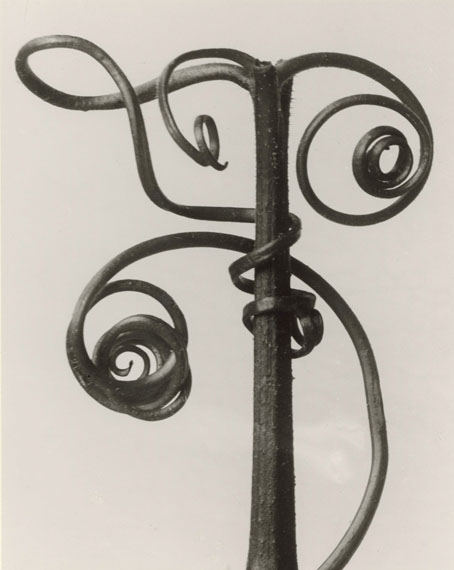
Cucurbita. Kürbisranke, 4 mal vergrößert
aus dem Portfolio "Karl Blossfeldt. 12 Fotografien" (Galerie Wilde, Köln 1975), 1900-1928
(Abzug 1975), Silbergelatineabzug, 19,5 x 24,6 cm
© Kunstpalast, Düsseldorf
PERSPECTIVES / SICHTWEISEN
The new photography collection / Die neue Sammlung Fotografie
Leopold Ahrendts » Eugène Atget » Käthe Augenstein » Irene Bayer » Bernd & Hilla Becher » Bernd & Hilla Becher » Sibylle Bergemann » Aenne Biermann » Ilse Bing » Karl Blossfeldt » Anna & Bernhard Blume » Günter Blutke » Renata Bracksieck » Robert Capa » Chargesheimer » Charles Clifford » Jesco Denzel » Jim Dow » Charles Eames » Bach Ernst-Ludwig » Walker Evans » Barnaby Evans » Hans Finsler » Arno Fischer » André Gelpke » Nan Goldin » Andreas Gursky » Candida Höfer » Wilhelm Hümmer » Wilhelm Hammerschmidt » Franz Hanfstaengl » Volker Hedemann » Paul Heismann » Wilhelm Helfer » Marta Hoepffner » Lotte Jacobi » Gertrude Käsebier » Heinrich Kühn » Peter Keetman » Rudolf Koppitz » Otto Kraft » Margaret Langdon » Helmar Lerski » Man Ray » Maurice Loewy & Pierre Henri Puiseux » Joel Meyerowitz » Ryuji Miyamoto » Lucia Moholy » László Moholy-Nagy » Eadweard J. Muybridge » Helmut Newton » Nicholas Nixon » Kurt Panzerbieter » Helga Paris » Oscar Gustave Rejlander » Albert Renger-Patzsch » Heinrich Riebesehl » Ringl + Pit (Grete Stern + Ellen Auerbach) » Ferdinand Ritter von Staudenheim » Alexander Rodchenko » Franz Roh » Tata Ronkholz » Joe Rosenthal » August Sander » Hugo Schmölz » Otto Schmidt » Sam Shere » Stephen Shore » Neal Slavin » Giorgio Sommer » Lotte Stam-Beese » Otto Steinert » Julius Stinde » Sasha Stone » Marianne Strobl » William Henry Fox Talbot » Georg Trump » UMBO (Otto Umbehr) » Nick (Huynh Cong) Ut » VKhUTEMAS Workshops » Monika von Boch » Edward Weston » Christopher Williams » Ludwig Windstosser » Willy Otto Zielke » Piet Zwart » & others
Exhibition: 19 Feb – 13 Sep 2020

Kunstpalast
Ehrenhof 4-5
40479 Düsseldorf
+49 (0)211-566 42 100
info@kunstpalast.de
www.kunstpalast.de
Tue-Sun 11-18 . Thu 11-21
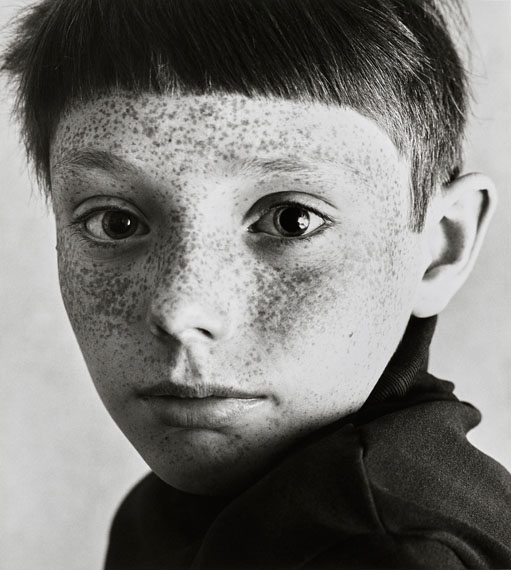
Uwe, 13.6.1967 (aus der Serie "Gesichter", 1967-1969)
Aus dem Portfolio 10 Photographien 1967-1982, hg. von der Galerie Kicken 2005
Silbergelatineabzug, 34 x 30,5 cm
Kunstpalast Düsseldorf
© VG Bild-Kunst, Bonn, 2020
"PERSPECTIVES"
The new photography collection
Exhibition: 19 February - 17 May 2020
For the first time an art exhibition in Düsseldorf is dedicated to photography from its early stages through to this day and sets out to unravel the medium’s many facets. This is made possible by the Kunstpalast’s acquisition in December 2018 of more than 3,000 photographs from the collection of Galerie Kicken. In the show
comprising around 200 works, avant-garde icons ranging from Man Ray (1890–1976) through to Bernd (1931–2007) and Hilla Becher (1934–2015) are complemented by surprising, lesser known positions, while series of works are juxtaposed with individual pictures.
Rather than following a chronological order, "Perspectives" gives insight into the photography collection by way of different subject areas. The exhibition brings together more than 100 photographers and also incorporates works from the Kunstpalast’s existing holdings of photographs. "With the acquisition of the collection of Galerie Kicken, the historically unique opportunity was seized to secure an extremely high-quality and extensive photography collection that does justice to Düsseldorf’s status as a city of photography.", comments Thomas Geisel, Mayor of the City of Düsseldorf.
"The collection, which was compiled with outstanding expertise by Rudolf and Annette Kicken, forms the most important building block for the collection area of photography in our museum", emphasises Felix Krämer, Director General of the Kunstpalast. "With this addition to the photographic works we already had in our holdings, we now have a remarkable stock that we were able to draw from for this exhibition. I am delighted",
Felix Krämer continues, "that with this show we are able to offer a starting point for an ongoing exploration of photography."
In eight different chapters, the exhibition shows examples of so-called Orientalist 19thcentury photography, of Pictorialism with its emulation of painting, and of the New Vision and New Objectivity movements of the 1920s and 1930s. Further, the presentation includes examples of experiments with light in Subjective Photography of the 1950s, documentary photography of the 1970s and 1980s, as well as American colour photography.
The correspondences between the works become apparent when following the exhibition route. Light, eponym and the most vital element of photography, is the theme of the first exhibition chapter. The selected photographs illuminate the different roles that light can play when an image comes into being: an actual motif, an element of mood, an object of investigation. The next chapter explores the notion of curiosity as a driving force behind photography. From its early days, photography was used in complex investigative processes: The photographer’s curious gaze turned to outer space, to the inside of the human body, or to the people around him. The third chapter is about the photographic gaze on people. It focuses on the portrait, which, rather than being a mere representation of a person, invariably also conveys an intention, a desire, a relationship. Taking photographs of things is the theme of the subsequent chapter of the exhibition. It reflects upon objects being silent and yet principal motifs in photography, and also on the aesthetic dynamic that things can develop in pictures.
The chapter that follows is dedicated to photography’s scope to provide order. It explores the appeal of patterns and constellations that can be found in an image, as well as the contribution that photography makes to both political and social order, for instance in the context of propaganda, or in other areas such as stagings of group portraits. Everyday life as a source of inspiration is the theme of the sixth section of the exhibition. Examples shown encompass photographs of the 19th century, when due to the technology’s complexity the scope of photographers was limited to their immediate surroundings, through to the conceptional and documentary interest taken in everyday lifeworlds in photography of the 1970s and 1980s. The subsequent chapter on the subject of testimony reflects on the expectations held of photography as a medium - both in the public and private sphere. The exhibition closes with illuminating the relationship between photography and space. Here, architectures, interiors, foreign and familiar places are explored, as well as the issue of pictorial space, which never quite corresponds to the real space.
The circumstance that there are countless possibilities to assign each picture to the thematic chapters is very much part of the concept of the arrangement chosen for the exhibition. In most of the shown works, several themes intersect. This illuminates the great diversity of possible photographic perspectives on a theme or an object, and also, on the other hand, of the different possible readings of photography.
The exhibition is sponsored by the Alfried Krupp von Bohlen und Halbach-Stiftung as well as Stiftung Van Meeteren.
The show is accompanied by a catalogue, published by Distanz Verlag, including a foreword by Felix Krämer and texts by Linda Conze, Janos Frecot and Thomas Weski. Furthermore, a total of 17 personal short texts highlight individual works of the collection.
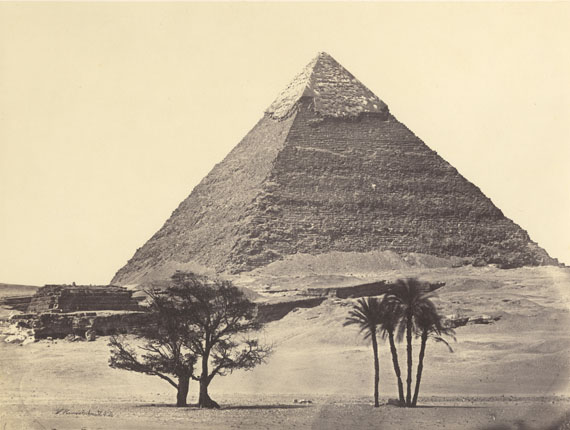
Zweite Pyramide von Ghizeh, 1860er-Jahre (Abzug 1860er-Jahre)
Albuminpapier auf originalem Karton
23,7 x 31,5 cm
Kunstpalast Düsseldorf
"SICHTWEISEN"
Die neue Sammlung Fotografie
Ausstellung: 19. Februar bis 17. Mai 2020
Erstmals widmet sich eine Ausstellung in Düsseldorf der Fotografie seit ihren Anfängen bis heute und fächert die große Vielfalt des Mediums auf. Möglich wird dies dank des Ankaufs von über 3000 Fotografien aus der Bestandssammlung der Galerie Kicken im Dezember 2018. In der rund 200 Werke umfassenden Ausstellung treten
Ikonen der Avantgarden von Man Ray (1890–1976) bis Bernd (1931–2007) und Hilla Becher (1934–2015) neben überraschende, weniger bekannte fotografische Positionen, das Einzelbild neben die Serie.
"Sichtweisen" verfolgt keine chronologische Ordnung, sondern erschließt die Sammlung über inhaltliche Themen. Die Schau versammelt mehr als 100 Fotografinnen und Fotografen und intergriert auch Werke aus dem
bisherigen Fotobestand des Kunstpalastes. "Mit der Erwerbung der Bestandssammlung der Galerie Kicken wurde die historisch einmalige Möglichkeit genutzt, einen überaus hochwertigen und umfangreichen Fotografiebestand zu sichern, der Düsseldorfs Status als Stadt der Fotografie entspricht.", hebt Thomas Geisel, Oberbürgermeister der Landeshauptstadt Düsseldorf, hervor.
"Das mit großer Kennerschaft von Rudolf und Annette Kicken zusammengetragene Konvolut bildet den wichtigsten Baustein für den Sammlungsbereich Fotografie in unserem Haus", betont Felix Krämer, Generaldirektor Kunstpalast. "In Ergänzung zu den bereits vorhandenen fotografischen Werken verfügen wir nun über einen
beachtenswerten Fundus, aus dem die Ausstellung schöpft. Ich freue mich,", so Felix Krämer, "dass wir mit dieser Ausstellung den Auftakt zu einer fortlaufenden Auseinandersetzung mit der Fotografie geben können."
In acht Kapiteln zeigt die Ausstellung Beispiele der sogenannten Orientfotografie des 19. Jahrhunderts ebenso wie die Nachahmung der Malerei durch die Fotografie im Piktorialismus, das Neue Sehen und die Neue Sachlichkeit der 1920er und 1930er Jahre. Auch die Lichtexperimente der Subjektiven Fotografie in den 1950er Jahren, das Dokumentarische und die Autorenfotografie der 1970er und 1980er Jahre sowie die amerikanische Farbfotografie sind exemplarisch vertreten.
Die Korrespondenzen zwischen den Werken spiegelt der Ausstellungsrundgang wider. Das Licht, Namensgeber und wichtigstes Element der Fotografie, ist Thema des ersten Ausstellungskapitels. Anhand der hier gezeigten Aufnahmen wird deutlich, dass Licht unterschiedliche Rollen in der Bildwerdung einnehmen kann: als Bilmotiv, als Stimmungselement, als Untersuchungsgegenstand. Das folgende Kapitel widmet sich der Neugier als treibender Kraft hinter der Fotografie. Von Beginn an war die Fotografie Teil komplexer Versuchsanordnungen: Der neugierige Fotografenblick richtete sich ins Weltall wie auch ins Innere des menschlichen Körpers oder auf das Gegenüber. Das dritte Kapitel der Ausstellung handelt von dem fotografischen Blick auf den Menschen. Das Porträt steht hier im Mittelpunkt, das nie nur Abbild eines Menschen ist, sondern immer auch eine Absicht, ein Begehren, ein Verhältnis transportiert. Das Fotografieren von Dingen ist Thema des folgenden Ausstellungskapitels. Es erzählt von Gegenständen als stummen und doch zentralen Motiven der Fotografie sowie von der ästhetischen Eigendynamik, die Objekte im Bild entfalten können. Dem ordnenden Charakter der Fotografie widmet sich das anschließende Kapitel. Es geht sowohl um die Anziehungskraft von Mustern und Konstellationen, die sich im Bild finden lassen, als auch um den Beitrag, den Fotografie aktiv zu politischer wie sozialer Ordnung leistet, zum Beispiel im Kontext von Propaganda, oder in anderen Zusammenhängen wie der Aufstellung zum Gruppenporträt. Der Alltag als eine Inspirationsquelle der Fotokunst steht im Mittelpunkt des sechsten Teils der Ausstellung.
Die Beispiele reichen von dem wortwörtlich naheliegenden Bildmotiv im 19. Jahrhundert, in dem aufgrund komplizierter Technik Fotografinnen und Fotografen auf ihre direkte Umgebung zurückgeworfen waren, bis zum konzeptuellen und dokumentarischen Interesse der Fotografie der 1970er und 1980er Jahre an alltäglichen
Lebenswelten. Das darauf folgende Kapitel zum Thema Zeugnis erzählt von den Erwartungen, die sich seit Erfindung des Mediums an die Fotografie richteten – im öffentlichen wie im privaten Bereich. Die Ausstellung schließt mit dem Verhältnis von Fotografie und Raum. Architekturen, Interieurs, die Fremde und das Eigene werden hier verhandelt wie auch die Frage des Bildraums, der dem wirklichen Raum nie ganz entspricht.
Dass es je Bild unzählige Möglichkeiten der Zuordnung zu den gewählten thematischen Kategorien gegeben hätte, gehört zum Programm der in der Ausstellung gewählten Anordnung. Bei einem Großteil der ausgestellten Werke kreuzen sich mehrere Themen. Die Möglichkeitsvielfalt der fotografischen Sichtweisen auf ein Thema oder einen Gegenstand wird deutlich, zum anderen aber auch der Lesarten von Fotografie.
Gefördert wird die Ausstellung von der Alfried Krupp von Bohlen und Halbach-Stiftung sowie der Stiftung Van Meeteren.
Begleitend zur Ausstellung erscheint im Distanz Verlag ein Katalog mit einem Vorwort von Felix Krämer und Texten von Linda Conze, Janos Frecot und Thomas Weski.
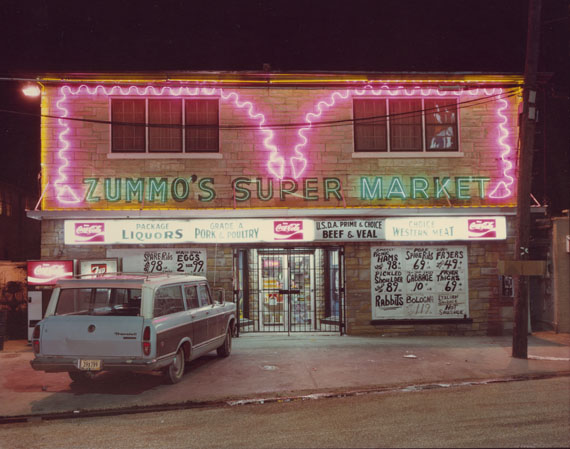
Zummo's Super Market, Airline Highway, Metairie, Louisiana, 1979
Chromogener Farbabzug, 19,5 x 24,6 cm
Kunstpalast, Düsseldorf
Courtesy Janet Borden, New York
© Jim Dow
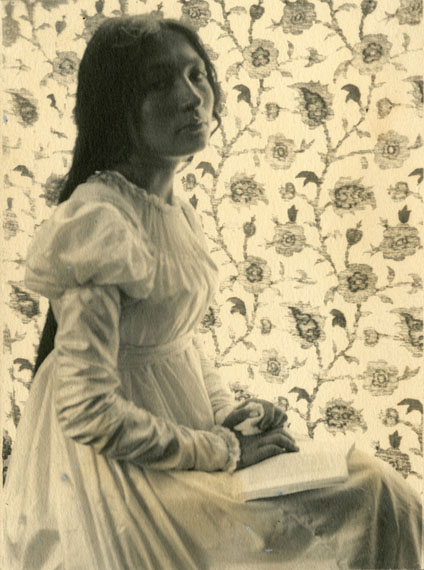
Porträt von Zitkala-Ša, 1898
Platindruck, 16 x 12 cm
Kunstpalast, Düsseldorf